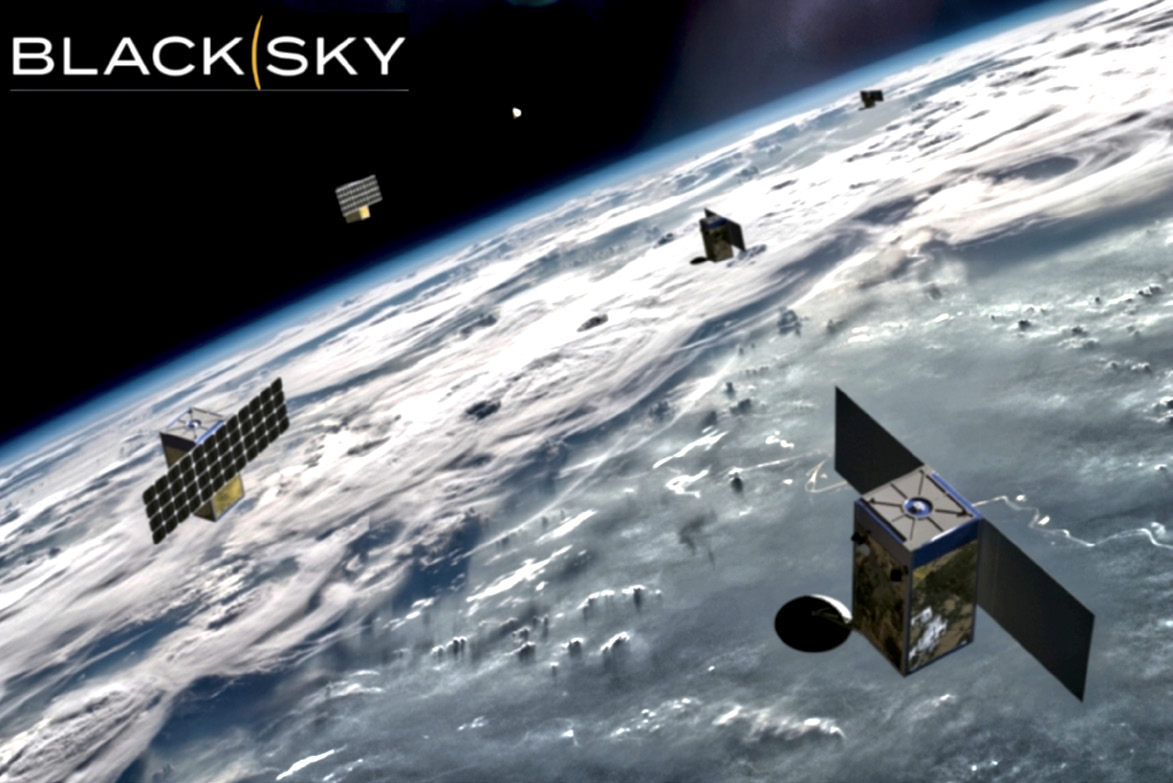BlackSky wins multi-million$ contract from the DoD
BlackSky Technology Inc. (NYSE: BKSY) has won a multi-million do contract in support of the U.S. Department of Defense (DoD) to collect and annotate thousands of BlackSky multi-frame burst images to train moving target artificial intelligence (AI) models for commercial motion imagery.

BlackSky multi-frame burst images are collected in rapid succession during a single satellite pass over an area of interest.
With multiple view angles captured within a matter of seconds burst imagery can be used to generate 3D volumetric products and accurate movement-oriented detection analytics.
Burst imagery, along with all BlackSky offerings, can uniquely be captured from early in the day to late in the evening.The contract provides subscription-based access to the BlackSky Spectra® tasking and analytics platform.
The customer expects to use BlackSky’s high-cadence, low-latency imagery and automated analytics to support customer-approved exercises, technology demonstrations and operations.
“We are taking BlackSky’s industry-leading ability to monitor moving objects from space another step forward by enhancing analytic accuracy and the ability to recognize patterns of life,” said Patrick O’Neil, BlackSky chief technology officer. “This foundational work is expected to help decrease the time to develop moving target algorithms for other related customer-led initiatives.”
www.blacksky.com
ThinKom intros ThinAir® GT aero antennas for special missions
ThinKom Solutions, Inc. has debuted the ThinAir® GT line of airborne solutions for government customers. Engineered to operate in the most demanding EMI, EMC, and EMP environments, ThinAir GT unlocks a new level of capabilities, while maintaining ThinKom’s proven reliability.

The ThinAir GT 2517 and GT 1717 Ka- band systems are approved on operational commercial and government networks, including LEO, MEO, GEO, and HEO constellations. This includes proven compatibility with the expanded frequency ranges of the WGS and SDA constellations. Other GT product variants operate in Ku-, K-, Ka-, and Q-band frequencies.
Modern networks require operation in expanded frequency ranges, larger channel sizes, and higher instantaneous bandwidth (IBW). ThinAir GT supports these demands for hopping and protected waveforms, critical to the U.S. DoD Joint All-Domain Command and Control mission.
The GT line includes solutions delivering up to 1 to 2 GHz IBW (K- and Q-band, respectively) to enable AEHF (Advanced Extremely High Frequency) operation. All GT systems include enhanced emission controls for robust anti-jam capabilities, including low probability of intercept/detection.
ThinAir GT terminals have demonstrated throughput up to 370/110 Mbps in live testing. The company anticipates achieving speeds exceeding 800/200 Mbps on select networks as new constellations are fully activated.
In addition to fuselage-mount offerings, ThinKom offers smaller terminal options for UAVs, and cavity-mount versions. These conformal designs deliver full system performance while mounted below the fuselage surface, eliminating incremental drag and obscuring the presence of SATCOM functionality on the aircraft.
The ThinAir GT line builds on ThinKom’s two decades of innovation to deliver efficient performance across multiple frequency bands. Incorporating the company’s patented, proven VICTS technology, ThinAir GT provides the best performance on the market while maintaining an optimal SWaP profile.
The company also recently completed an analysis showing significantly lower drag from its contoured radome designs compared to flat panel ESA technology. This supports lower fuel burn and extended time on station for critical missions. U.S. Government aircraft have been flying with ThinAir systems on board since 2018.
ThinAir antennas boast proven reliability, with a measured MTBF in excess of 50,000 hours based on more than 40 million accrued operational hours to date.
“Governments are rapidly adopting a multi-constellation, multi-orbit communications profile, and our upgraded ThinAir GT product line is the perfect match,” said Bill Milroy, ThinKom’s chief technology officer and co-founder. “We’re proud of our GT solutions, which deliver the best performance today while engineered to work with the next generation of satellite networks. This future-proof architecture ensures governments can easily access the most resilient and secure networks wherever they need to operate around the globe.”
www.thinkom.com
CopaSAT stirs up a STORM
CopaSAT LLC (CopaSAT) has released the company’s STORM V3 satellite communication (SATCOM) terminal engineered for commercial, government, military, and national security operations.

The electronically steered antenna (ESA) boasts high-throughput data rates of up to 200 Mbps downlink and 20 Mbps uplink.
The unit comes in a shock-resistant, IP68- rated package of only 23″x20″x2.65″ and a weight of less than 30 pounds (13.6 Kg).
STORM V3 is easy to deploy with auto- provisioning and no commissioning required anywhere in the world.
A service plan is included and the terminal attaches to vehicles and vessels via standard mounting systems.
STORM V3 provides flexible connectivity via a mobile hotspot that can use SD- WAN to select between cellular, Wi-Fi, or satellite networks for optimization, failover, or balancing.
“As the demand for resilient, low- latency satellite communication solutions intensifies, CopaSAT has designed the STORM V3 terminal that integrates state-of- the-art technology including the Starlink and Starshield antenna systems. This transformative system leverages low-latency LEO constellations that are setting new benchmarks for reliable SATCOMs-on-the-Move (COTM) and Communications-on-the-Pause (COTP) connectivity. Designed with precision and rigor, the STORM V3 terminal is currently undergoing testing to MIL-STD-810H standards, ensuring durability and reliability in even the most demanding environments. This milestone underscores our unwavering commitment to innovation and excellence, as we strive to provide our customers with unmatched performance and connectivity solutions that transcend boundaries and elevate possibilities,” said Charlie Daniels, Business Development Director, CopaSAT.
copasat.com
Lockheed Martin’s next missile defense interceptor process
In November of 2023, Lockheed Martin (NYSE: LMT) successfully completed a Missile Defense Agency (MDA) acquisition milestone for the nation’s modernized long range ballistic missile interceptor.

The company completed the first Knowledge Point — known as KP1 — ahead of schedule, taking a major contractual step forward that allows the firm’s Next Generation Interceptor (NGI) program to continue development toward the Critical Design Review (CDR).
During KP1, the MDA evaluated Lockheed Martin’s development progress to date.
This includes completing design review milestones and demonstrating significant maturation across critical technologies, manufacturing readiness, and utility of the company’s NGI Software Factory.
This KP1 achievement follows the program’s All Up Round Preliminary Design Review, which Lockheed Martin executed on-schedule in September.
The company remains on its accelerated path to the next engineering milestone, CDR.
Current work includes building ground test vehicles and virtually flying the interceptor during system integration trials, enabled by our digital engineering tool suite.
NGI is designed to deter and defeat evolving rogue-nation long range ballistic missile threats to the U.S. homeland.
The first Lockheed Martin NGI is forecast for delivery to the warfighter as early as Fiscal Year 2027.
“I’m proud of the technical rigor our Lockheed Martin and industry team demonstrated. We proved at KP1 that we have reached a level of maturity unprecedented at this stage of a missile defense program,” said Sarah Reeves,
Vice President of NGI at Lockheed Martin. “With MDA’s approval,
we have turned a corner into our detailed design phase and will keep testing our integrated NGI hardware and software in preparation for production and flight testing.”
lockheedmartin.com



